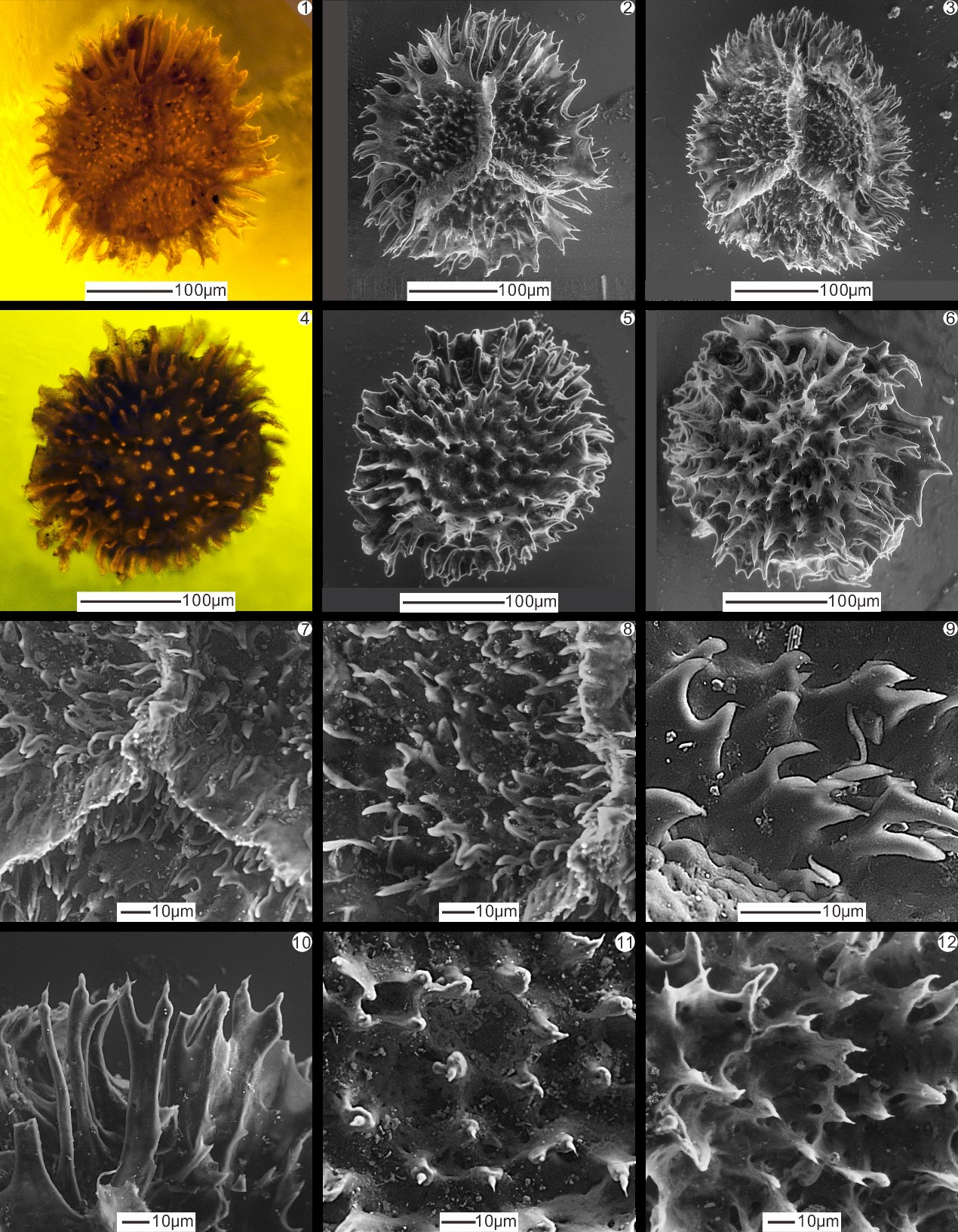
FLM and SEM images of Cereusisporites mirabilis Lu et Ouyang, 1978
The Middle Devonian represents an important period for the diversification and evolution of heterosporous plants. It has been shown that plants from this group evolved independently in several clades, as indicated by the diverse megaspore assemblages from this period, as well as by the Givetian occurrence of extreme forms of heterospory such as the seed megaspore.
Lycopsid megaspores isolated from the Middle Devonian, Givetian, Shangshuanghe Formation at Qujing in Yunnan, Southwest China, were identified and illustrated by PENG Huiping, Dr. LIU Feng and Prof. ZHU Huaicheng from Nanjing Institute of Geology and Palaeontology, Chinese Academy of Sciences. Three species (Longhuashanispora reticuloides Lu et Ouyang, 1978, Ocksisporites maclarenii Chaloner, 1959, and Cereusisporites mirabilis Lu et Ouyang, 1978) are described. Comparisons with in situ spores produced by plant fossils recovered from coeval horizons in adjoining region suggest that Longhuashanispora reticuloides shares ultrastructural and morphological characteristics of the in situ spores yielded by both heterosporous and homosporous ligulate lycopsids. Its parent plant probably represents a transitional form from the homosporous ligulate to the heterosporous ligulate lycopsids. It supports the previous conclusion that the homosporous ligulate lycopsid lineage and the heterosporous ligulate lycopsid lineage have diverged in the late Middle Devonian. The parent plants of O. maclarenii and C. mirabilis may have been a type of herbaceous lycopsid, which is rarely preserved as a fossil.
Furthermore, The presence of the genus Ocksisporites in South China, Arctic Canada, and northern Poland indicates that in the Middle Devonian a migration pathway for plants existed between South China and Laurasia.
This work was funded by the National Natural Science Foundation of China.
Reference: Peng, H.P., Liu F.*, Zhu, H.C (2016): Morphology and ultrastructure of Middle Devonian dispersed megaspores from Qujing, Yunnan, Southwest China.Review of Palaeobotany and Palynology, 234. 110-124.
